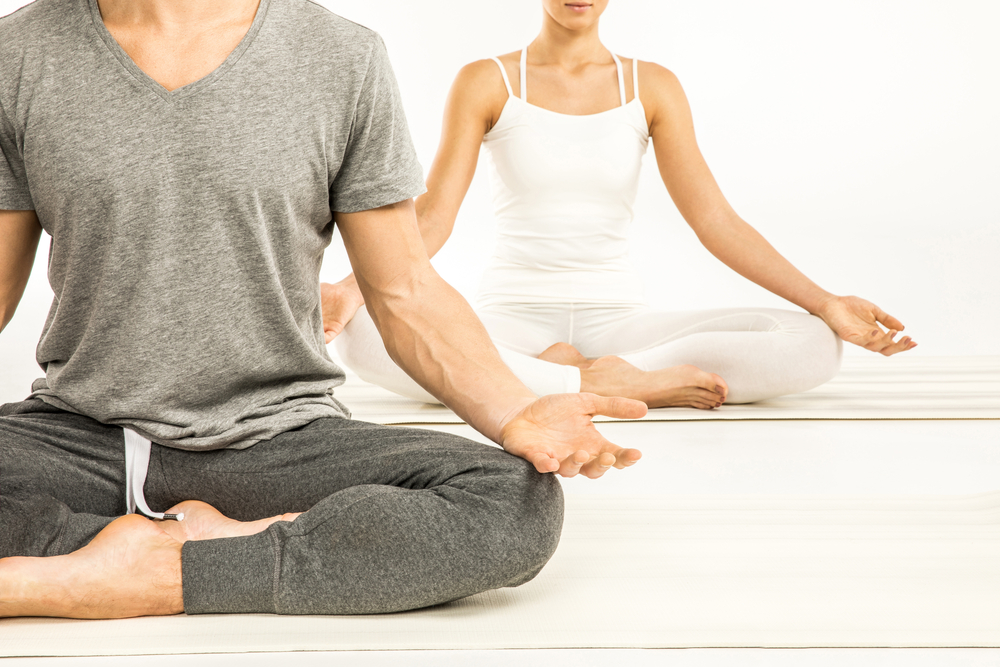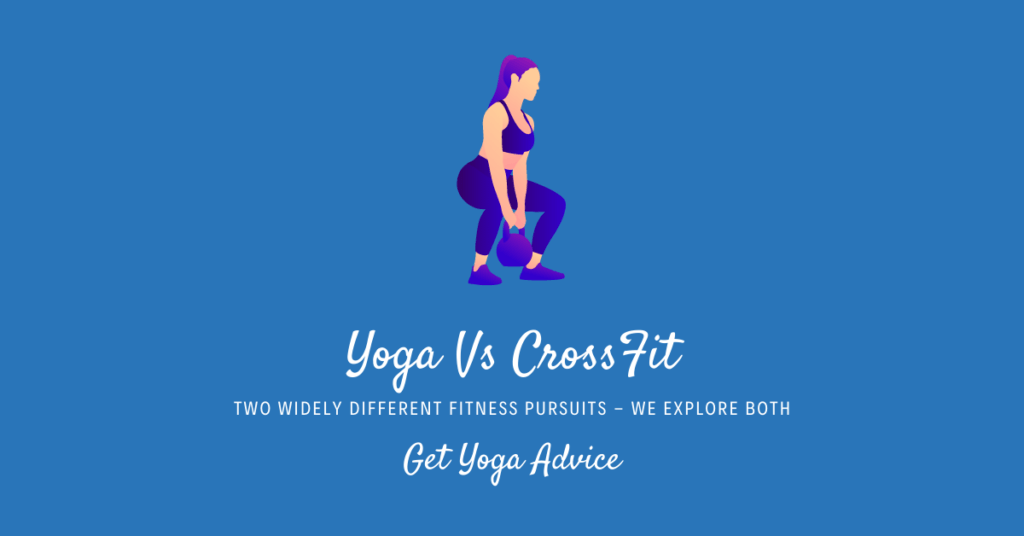When you consider yoga vs CrossFit, you’re exploring two widely different fitness pursuits. This article explores both, so you can decide which will help you achieve your fitness goals.
The better you understand each type of sport, the more informed choices you can make about how to get ripped, swole or fit.
Contents
A Brief Introduction to Yoga and CrossFit
While the precise timeline of yoga is up for debate, the general consensus is that people have practiced yoga for between 5,000 and 10,000 years. Granted, there have been a few variations along the way but the timeless nature of yoga makes it a standout — so much so that 30 million Americans practice yoga today.
There are many types of yoga including hot yoga, restorative yoga and power yoga, all of which vary intensity, duration and skill level.
By comparison CrossFit is hardly an ancient practice. In fact, it formally began in 2000. Since then it has experienced explosive growth among the population for its brief high-intensity workouts.
You might also be interested in our yoga vs. gym guide.

According to Rally Fitness, there are approximately four million people who practice CrossFit today.
Crossfit is a hybrid of many different fitness strategies and isn’t for the faint of heart. It combines the following training and exercise methods into one solid, adrenaline-pumping fitness routine including:
- Plyometrics
- Weightlifting (including Olympic weightlifting)
- Gymnastics
A CrossFit typical workout of the day or WOD may include weightlifting exercises like power cleans, snatches or squats, and cardio exercises like rowing, running or wall balls.
A WOD usually lasts anywhere from ten to thirty minutes. Usually, you won’t find out the WOD until the day of your workout.
How Yoga Compares to Crossfit

Yoga exercises the mind and body, something other fitness practices can’t claim.
Yoga offers a low impact method of exercise that is gentle on bones and joints unlike CrossFit. This makes yoga a much better choice for those who struggle with high-impact workouts, including the elderly.
Mental Health Benefits of Yoga
Yoga offers a number of mental health benefits. Practicing yoga regularly helps people develop healthy coping skills that allow them to obtain more positive outlooks on life. Typically, over time, it will:
- Enhance calmness
- Boost mental clarity
- Provide stress relief
- Diminish anxiety
- Fight depression
- Increase concentration and focus
- Improve body and self-awareness
Physical Benefits of Yoga
Many people turn to yoga for a low impact method to achieve various physical health benefits, including the following:
- Reduction of inflammation and chronic pain
- Improved heart health
- Increased flexibility
- Better stability and balance (which is extremely beneficial for avoiding falls)
- Improved sleep quality
- Better breathing
- Boosted strength
- More mindful eating
- Enhanced weight loss and fitness
- Reduced blood pressure
- Lower blood glucose levels
Yoga is about so much more than maintaining a certain shape or losing a certain number of pounds. In fact, people of all ages and backgrounds practice yoga happily.

It may take a while to learn yoga, particularly the more challenging poses. You may want to visit several studios or online yoga classes before committing to a membership that doesn’t meet your needs or address your areas of concern.
The Benefits of CrossFit
CrossFit focuses on providing high-intensity workouts that offer the best bang for your buck in a busy, overbooked schedule. Many CrossFittters get in their WOD first thing in the morning before work.
Mental Health Benefits of CrossFit
Like yoga, you might find yourself lying on the ground after a workout but that’s more due to exhaustion than because it’s time to meditate.
CrossFit places less of an emphasis on mental health than yoga. However, you will enjoy a rush of endorphins after a hard, sweaty WOD.
If you like working out as part of a group or within a team, you’ll also enjoy the social nature of a CrossFit WOD where you’re up against the clock and keeping score against other teams or CrossFitters.
Physical Benefits of CrossFit

CrossFit is embraced by athletes, sports trainers, and fitness enthusiasts alike. Thanks to its emphasis on weight training, gymnastics and cardio, CrossFit should help you:
- Improve stamina
- Increase strength
- Boost speed
- Strengthen your core
- Promote flexibility
- Generate power
- Improve coordination (and balance)
The Final Word on Yoga vs CrossFit
How does CrossFit compare to yoga?
The former involves high-intensity brief-duration workouts that leave you feeling as though you’ve just gone 12 rounds with British Boxer and two-time heavyweight world champion, Tyson Fury.
The latter is a lower-intensity workout supported by thousands of years of heritgage. It will still hone your stamina, endurance, and fitness.
Train with CrossFit if you’re looking to bulk up and build visible muscle mass. Practice yoga if you’re looking to strengthen your core, rehabilitate injuries or combine mental and physical training.
Honestly, though, there is no real reason you have to choose one or the other as long as you are fit enough to engage in the high-intensity CrossFit training regimen. You can do both on alternating days and enjoy the benefits that each offers.



